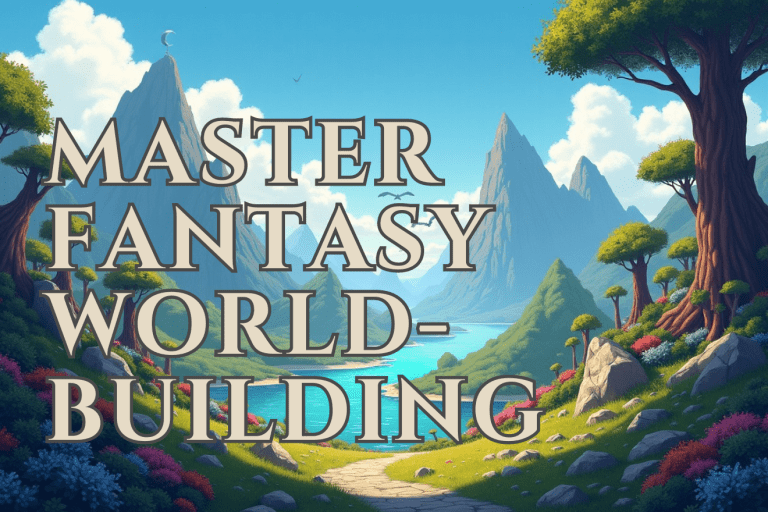Your Guide to Writing a Short Story in 2024
Have you ever felt the urge to tell a story but didn’t know where to start? You’re not alone! In fact, a recent survey found that 81% of Americans want to write a book, but only 2% actually do it. Writing a short story is the perfect way to dip your toes into the vast ocean of creative writing. It’s like a literary espresso shot – compact, potent, and sure to give you a creative buzz! In this guide, we’ll walk through the exhilarating journey of writing a short story, from that first spark of an idea to the satisfying moment when you type “The End.” So grab your favorite notebook or fire up your laptop – it’s time to unleash your inner storyteller!
1. Brainstorming Your Story Idea
Every great story starts with an idea. But where do you find that spark?
- Explore Various Sources of Inspiration: Look to personal experiences, news articles, or overheard conversations. Inspiration is everywhere if you keep an open mind.
- Use Writing Prompts to Spark Creativity: Prompts can kickstart your imagination. Try out different prompts to see what resonates with you.
- Practice Freewriting to Generate Ideas: Set a timer and write without judgment. Let your thoughts flow freely – you might stumble upon a great idea.
- Consider “What If” Scenarios: Ask yourself “what if” questions. What if a character discovers a hidden letter? What if the world ends tomorrow?
- Identify the Central Conflict or Theme: Decide on the main conflict or theme. This will guide your story and keep it focused.
Looking to up your writing game? Check out this course from Udemy!
2. Developing Your Characters
Characters are the heart of any story. They drive the plot and connect with readers.
- Create a Protagonist with Clear Goals: Your main character should have clear goals and motivations. What do they want, and why?
- Craft Supporting Characters: Develop characters that complement or challenge your protagonist. They add depth to the story.
- Use Character Questionnaires: These can help flesh out your characters’ personalities and backstories. The more you know about them, the more real they’ll feel.
- Consider Character Growth: Think about how your characters will change throughout the story. This adds a dynamic element to your narrative.
- Ensure Each Character Has a Distinct Voice: Every character should have a unique voice and purpose. This makes them memorable and engaging.
3. Plotting Your Short Story
Plotting is essential for keeping your story tight and focused.
- Understand Short Story Structure: A typical short story includes exposition, rising action, climax, falling action, and resolution.
- Choose a Narrative Structure: Decide on a structure that fits your story, whether it’s linear, non-linear, or a frame narrative.
- Create a Rough Outline: Map out your story beats. This helps guide your writing and ensures a cohesive narrative.
- Move the Story Forward: Every scene should either advance the plot or reveal something about the characters. Nothing should feel like filler.
- Plant Seeds for the Ending: Hint at your ending throughout the story. This creates a satisfying payoff for the reader.

4. Crafting a Compelling Opening
The opening is your chance to grab the reader’s attention.
- Hook the Reader with an Intriguing First Line: Start with something that piques curiosity. A strong opening sets the tone for the entire story.
- Establish the Tone and Mood: From the beginning, make it clear what kind of story you’re telling. Is it dark and mysterious or light and humorous?
- Introduce the Main Character Quickly: Readers should meet your protagonist early on. Set up their situation to draw the reader in.
- Create Questions in the Reader’s Mind: Give readers something to wonder about. This keeps them turning the pages.
- Avoid Excessive Backstory: Focus on the present action. There’s time to reveal backstory later in the narrative.
5. Writing the First Draft
The first draft is all about getting the story down.
- Set a Consistent Writing Schedule: Dedicate time to writing each day or week. Consistency helps maintain momentum.
- Focus on Progress, Not Perfection: Don’t worry about making it perfect. Just get the words on the page.
- Use Dialogue to Reveal Character: Dialogue can show who your characters are and how they feel. Make it purposeful.
- Show, Don’t Tell: Use sensory details to bring scenes to life. Let readers experience the story through the characters’ eyes.
- Embrace the “Vomit Draft” Mentality: It’s okay if your first draft is messy. You can always revise it later.
6. Revising and Polishing Your Short Story
Revision is where your story truly takes shape.
- Take a Break Before Revising: Step away from your draft for a few days. This helps you return with fresh eyes.
- Read Your Story Aloud: This helps you catch awkward phrasing and pacing issues. If it sounds off, it probably is.
- Cut Unnecessary Words or Scenes: Be ruthless. If it doesn’t serve the story, cut it.
- Ensure Your Ending is Satisfying: The ending should tie up loose ends or leave the reader with something to think about.
- Get Feedback from Beta Readers: Others can offer insights you might have missed. Feedback is invaluable.
For tips on effective revision, explore this guide to revising your story from Writer’s Digest.
7. Editing for Clarity and Impact
Editing is the final step to ensure your story is clear and impactful.
- Check for Consistency: Make sure point of view, tense, and character details are consistent throughout.
- Vary Sentence Structure: Mix up your sentence lengths to create a more dynamic flow.
- Eliminate Clichés: Replace clichés with fresh, original descriptions. This makes your writing stand out.
- Ensure Every Word Counts: In short stories, every word should serve a purpose. Be precise and concise.
- Polish Your Dialogue: Dialogue should sound natural and reveal character. Edit it until it feels right.
Conclusion
Congratulations! You’ve just embarked on an incredible journey from a spark of an idea to a fully-fledged short story. Remember, writing is a craft, and like any skill, it gets better with practice. Don’t be discouraged if your first attempt isn’t a masterpiece – even the greats like Ernest Hemingway and Virginia Woolf had to start somewhere. The beauty of short stories is that you can write many of them, experimenting with different styles, genres, and techniques. So keep writing, keep reading, and most importantly, keep believing in your unique voice. Who knows? Your short story might be the first step toward that novel 81% of Americans dream of writing. Now, it’s time to take that polished gem of a story and share it with the world. Happy writing!
For more writing tips and inspiration, visit the BookMatchClub homepage.







